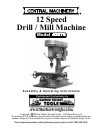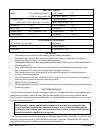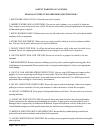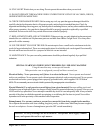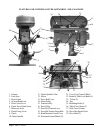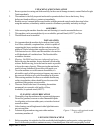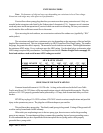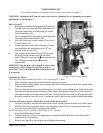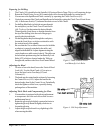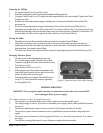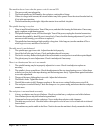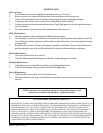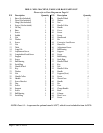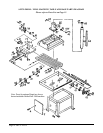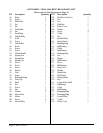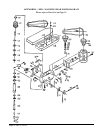
The machine doesn’t run when the power switch is turned ON.
1. The power cord is not plugged in.
2. The chuck spindle may be bound by the workpiece, cutting bit or fixture.
3. If there is a surge in the current, the circuit breaker may have opened. Press the circuit breaker back in,
if it is in the open position.
4. The belt tension may not be tight. Adjust the tension lever and lock it in place.
The spindle bearing is very hot.
1. There is insufficient lubrication. Turn off the power, and check the bearing for lubrication. If necessary,
apply a medium weight bearing grease.
2. The spindle bearing is worn, or is fixed too tight. Turn off the power, unplug the electrical connection,
and rotate the spindle by hand. Be sure it turns freely. If not, check the bearing adjustment. If you feel
uneveness in the bearing, you will have to replace it.
3. The spindle has been turning at high speed for a long time. After long use, turn the machine off for a
while to give it a rest, and allow it to cool off.
The table travel is not balanced
1. The spindle taper gap is too wide. Adjust the arbor bolt properly.
2. One of the leaf bolts may be loose. Check and tighten them if necessary.
3. The feed is too deep. Reduce the depth of the cut, and make several passes to reach the required depth.
4. The gib strip may be out of adjustment. Check it and adjust it if necessary.
There is a vibration,and the cut is not smooth
1. The spindle bearing may be improperly adjusted or is worn. Check it and adjust or replace as
necessary.
2. The spindle is loose up and down. Check the adjustment of the two inner bearing covers. Adjust them
so there is no free play in the taper bearing, and the bearing turns freely. Tighten them against each other
to save this adjustment.
3. The gap of the taper sliding plate is too wide. Adjust the bolt tension.
4. The chuck is loose. Tighten the chuck.
5. The drill bit or cutter is dull. Sharpen or replace it. Be sure to use cutting fluid to preserve tool life.
6. The workpiece is not held firmly. Check the clamps or vise you are using, and assure that the workpiece
cannot move.
The workpiece is not machined accurately
1. A heavy workpiece may be out of balance. Check to see that heavy workpieces are held in balance.
Out of balance pieces may shift when being machined.
2. A hammer has been used on the workpiece. Never strike the workpiece with a hammer.
3. The table may not be level. Check the table with a spirit level to be sure it is level both side to side and
front to back.
4. The machine may not be stable in the floor. Check to be sure the machine is firmly mounted to the floor.
Page 11 SKU # 42976



